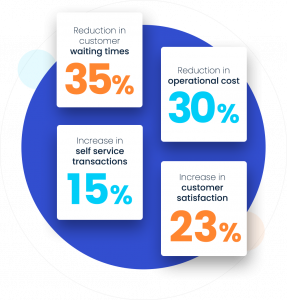In today’s competitive business landscape, providing an outstanding customer experience (CX) is dominant. CX encompasses every interaction a customer has with a company, from browsing a website to receiving support.
This article dives into the fundamental Elements of Customer Experience, which serve as the building blocks for creating positive and lasting impressions.
Understanding these Elements of Customer Experience is like having a secret key for success. They include aspects like personalized service, seamless communication, and reliability.
By mastering these elements, businesses can forge deeper connections with their customers, leading to increased satisfaction and loyalty.
Let’s explore the critical customer experience components that make up exceptional customer experience. Whether you’re a seasoned business owner or just starting out, grasping these elements will undoubtedly steer your company toward greater heights of success.
Key Elements of Customer Experience

In the world of business, understanding the customer experience key elements is like holding the compass to success.
These fundamental elements serve as the foundation for crafting exceptional customer interactions. They encompass every touchpoint a customer has with a business, from the initial introduction to the final transaction and beyond.
Let’s look at these in detail for a better understanding of aspects of customer experience.
1. Seamless Multichannel Communication
Seamless multichannel communication is the bedrock of modern customer experience. It encompasses the website and mobile appointment interface, ensuring it’s not only functional but also intuitive and user-friendly.
Social media interactions provide accessible platforms for engagement, allowing customers to interact with businesses in real time. Meanwhile, email and messaging serve as direct lines of communication, facilitating personalized interactions.
A unified approach across these channels enhances convenience and accessibility for customers. Whether they prefer browsing on a website, using a mobile app for appointments, or reaching out through social media or messaging, the experience remains consistent and seamless.
This cohesive strategy simplifies customer interactions and strengthens relationships, making it easier for them to connect, inquire, or book appointments on the go. In essence, prioritizing these key elements of customer experience lays the foundation for lasting customer satisfaction and loyalty.
2. Personalization and Customization
When it comes to customer experience management, personalization and customization stand as paramount elements and essential customer experience strategies. They elevate interactions from transactional to meaningful, forging a deep connection between the customer and the brand.
- Tailored Recommendations: Understanding customer preferences allows businesses to offer products or services that align perfectly with their needs. This tailored approach showcases a commitment to the customer’s satisfaction and creates a memorable experience.
- Precision in Marketing: Personalized marketing campaigns speak directly to the individual, resonating more personally. This targeted approach demonstrates a keen understanding of the customer’s interests and affirms that their unique needs are valued.
Prioritizing personalization and customization within customer experience management yields manifold benefits for businesses:
- Enhanced Customer Loyalty: Businesses foster a sense of belonging by demonstrating a genuine interest in their preferences, leading to increased customer retention.
- Higher Customer Satisfaction: Tailored recommendations and personalized marketing efforts result in happier, more satisfied customers who feel understood and valued.
- Increased Sales and Revenue: Customized offerings are more likely to meet customers’ specific needs, leading to higher conversion rates and increased revenue streams.
Incorporating these elements of customer experience, along with strategic practices like customer journey optimization, heightens customer satisfaction and fortifies brand loyalty, ultimately driving business success.
3. Consistency Across Touchpoints
The components of customer experience encompass various facets, with consistency across touchpoints playing a pivotal role in ensuring seamless and reliable interaction.
- Brand Consistency: This involves maintaining a uniform brand image across all touchpoints. Visual elements like digital signage, tone of communication, and overall brand identity should resonate consistently. This builds trust and recognition, regardless of how customers engage with the business.
- Messaging Consistency: Clear and coherent messaging is fundamental. It reinforces the brand’s values and promises. No matter the channel of interaction—be it the website, social media, or in-person—the message should remain steadfast. This fosters trust and reliability in the eyes of the customer.
Consistency across touchpoints serves as a cornerstone in the customer experience journey. It instills trust, reinforces brand identity, and ensures customers receive a seamless and uniform message, regardless of how they engage with the business. This consistency is not just a practical aspect; it’s a strategic move that contributes to the overall positive customer experience benefits.
This unity across channels enhances customer satisfaction and solidifies brand loyalty, ultimately contributing to the overall success of the enterprise.
4. Ease of Use and Accessibility
Two critical elements of good customer service are the ease of use and accessibility of products or services. These components ensure that customers can interact with a business smoothly and inclusively and are a crucial part of customer experience solutions.
- User-Friendly Interfaces: A user-friendly interface is the cornerstone of a positive customer experience. It means that websites, apps, or physical products should be designed with simplicity and intuitiveness in mind. Customers should easily navigate and accomplish tasks without unnecessary complexity or confusion.
- Accessibility for Diverse Audiences: Inclusivity is vital. Businesses must cater to diverse audiences, including those with disabilities. This involves providing options like screen readers, alternative text for images, and other accessibility features.
By prioritizing ease of use and accessibility, businesses enhance customer satisfaction and broaden their reach to a broader audience. These elements of good customer service exemplify a dedication to delivering a positive and inclusive experience for every customer, fostering loyalty and long-term success.
5. Predictive Analytics for CX Improvement
 Employing predictive analytics is a cutting-edge approach that significantly enhances the customer experience and is a part of crucial elements of customer experience. It revolves around foreseeing customer behavior and preferences and proactively addressing any potential issues.
Employing predictive analytics is a cutting-edge approach that significantly enhances the customer experience and is a part of crucial elements of customer experience. It revolves around foreseeing customer behavior and preferences and proactively addressing any potential issues.
- Predicting Customer Behavior and Preferences: By analyzing past data and patterns, businesses can make informed predictions about what their customers will likely do or prefer in the future. This allows for tailored recommendations and personalized experiences that resonate with individual customer needs.
- Anticipating and Proactively Addressing Issues: Predictive analytics goes beyond foreseeing positive behaviors. It also enables businesses to identify and mitigate potential problems before they occur. This proactive approach shows customers that their concerns are valued and addressed promptly.
Implementing predictive analytics and digitization into customer experience strategies transforms interactions from reactive to proactive. It allows businesses to stay ahead of customer needs, providing tailored solutions and experiences.
This not only boosts satisfaction but also builds trust and loyalty. By leveraging these elements of customer experience and employing effective strategies to measure customer experience, businesses can stay at the forefront of customer-centric innovation, setting them apart in today’s competitive landscape.
Case Studies
Chick-fil-A: Elevating Fast-Food Service
Chick-fil-A stands as a beacon of exceptional customer experience in the fast-food industry. Their commitment to “second-mile service” is exemplified through friendly, efficient, and genuinely caring staff.
For instance, a 96-year-old WWII veteran visited a Maryland Chick-fil-A, distressed by a flat tire during his drive. Manager Daryl Howard swiftly stepped in, changing the tire in just 15 minutes. This act of exemplary service showcased Chick-fil-A’s legendary commitment to customers.
Amazon: Pioneering E-Commerce CX
Amazon revolutionized e-commerce and set a gold standard for customer experience. Their platform’s user-friendly interface, extensive product range, and reliable delivery services have earned them global acclaim. Amazon’s personalized recommendation engine analyzes customer behavior to offer tailored product suggestions, enhancing user satisfaction.
Moreover, their customer service is prompt and effective, swiftly addressing any concerns. A testament to their commitment, during a major snowstorm, an Amazon delivery driver walked through a live police standoff to ensure a timely delivery, showcasing their unwavering dedication to customer satisfaction.
Final Words
In the business sector, mastering the elements of customer experience is similar to holding the keys to success. Companies like Chick-fil-A and Amazon have elevated customer satisfaction to an aspirational level.
Their unfaltering dedication to friendly service, personalized interactions, and going the extra mile exemplifies how prioritizing customer experience can set a brand apart.
Customer feedback serves as the compass guiding these companies toward continuous improvement. It’s the invaluable tool that refines their strategies, ensuring they remain attuned to evolving customer needs.
Chick-fil-A’s attentiveness and Amazon’s commitment to user-friendly interfaces are not mere coincidences but the fruits of careful listening.
In today’s competitive setting, exceptional customer experience isn’t just an option; it’s a necessity. Companies that understand and implement these fundamental elements not only cultivate loyalty but also pave the way for sustained growth and success.
As we navigate the evolving business model, the lessons from these exemplary companies serve as proof of the prevailing power of exceptional customer experiences.